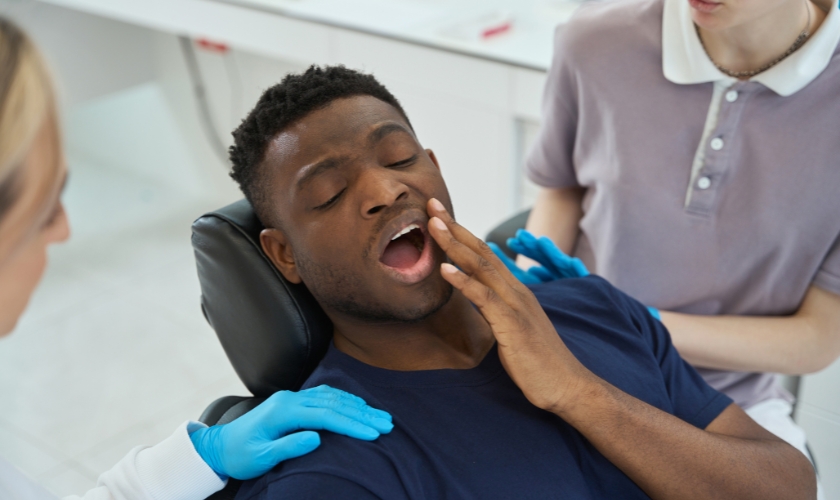
Pain from a wisdom tooth can switch from troublesome to ominous within seconds. You’d rather have straight answers, not hypotheses, and you’d rather have immediate pain relief. This guide takes you step by step through the “get help now” signals, the likely reasons for the pain, and the right things you can do until you make an appointment for care, with next steps to follow for treatment by your emergency dentist.
When pain is an emergency
Seek a Newton emergency dentist’s assistance if you experience the following signs:
- Fever, facial swelling, or pus drainage
- Opening your mouth, swallowing, or breathing has become troublesome
- Intense oral pain that even over-the-counter pain relievers fail to fix/improve
- Worsening pain 2–3 days after a tooth extraction (it might be a dry socket)
These can be signs of a spreading dental infection or complication which have to be urgently treated. Swelling of the face with fever and intense pain are characteristic warning signs of an abscess, which should be treated immediately. Dry socket or alveolar osteitis can make you experience oral pain that’s so bad that sitting still with it becomes next to impossible.
If you cannot, surely claim that your oral complication is a wisdom tooth emergency, and call an emergency dentist in Newton. Same-day evaluation can save you from crumbling tooth pain and save your dental structure.
What’s causing the pain?
Pericoronitis (inflamed gum over a partially erupted tooth)
When a wisdom tooth only partly breaks through the gum, a small flap of tissue (operculum) can trap food and bacteria. The result is painful inflammation and sometimes infection.
Impaction and pressure
The majority of third molars lack space to erupt normally, hence they put pressure on adjacent teeth, crowd them, or form cysts. Lack of enough space is one of the primary causes of impaction, and your dentist can confirm this with the use of X-rays.
Post-extraction complications
Following extraction, a displaced blood clot can leave bone and nerves exposed – dry socket, which is extremely painful but is curable. It is unlikely with simple extractions (roughly 1–5%) but occurs more frequently with surgical extraction of impacted third molars (up to ~30%).
Safe relief while you arrange care
- Apply a cold compress to the outside of your cheek in brief time periods.
- Rinse gently with warm saltwater to maintain the area cleaner.
- Take over-the-counter pain drugs according to package instructions (don’t place aspirin on gum).
- Avoid dirt in the region; don’t “dig” under the gum flap with sharp objects.
Home oral care makes discomfort bearable but does not cure an infection. Call for help whenever you suspect a wisdom tooth emergency.
How emergency dentists restore wisdom tooth pain
Office cleaning and irrigation
For pericoronitis, your dentist will débridé the area around the operculum, irrigate the pocket, and smooth rough edges to reduce irritation. If there are systemic signs (face swelling, fever), antibiotics will also be administered along with local treatment.
Definitive procedures
According to your examination (panoramic X-ray or CBCT) and assessment, treatment may include conservative gum reshaping (operculectomy) or extraction of the offending third molar. Third molar treatment follows established surgery protocol to maintain adjacent structures and return function.
Comfort post-extraction
Our dental care team will explain the best tips to care for your mouth, dietary changes that support your oral health, and steps to reduce dry-socket risk (such as using antimicrobial mouthwash).
If you’ve got severe pain, swelling, or you’re experiencing illness, it’s a wisdom tooth emergency, and you should get professional help today. Newton Dental Studio can diagnose the cause, ease the pain, and establish a clear treatment plan that’s tailored to your health goals.


